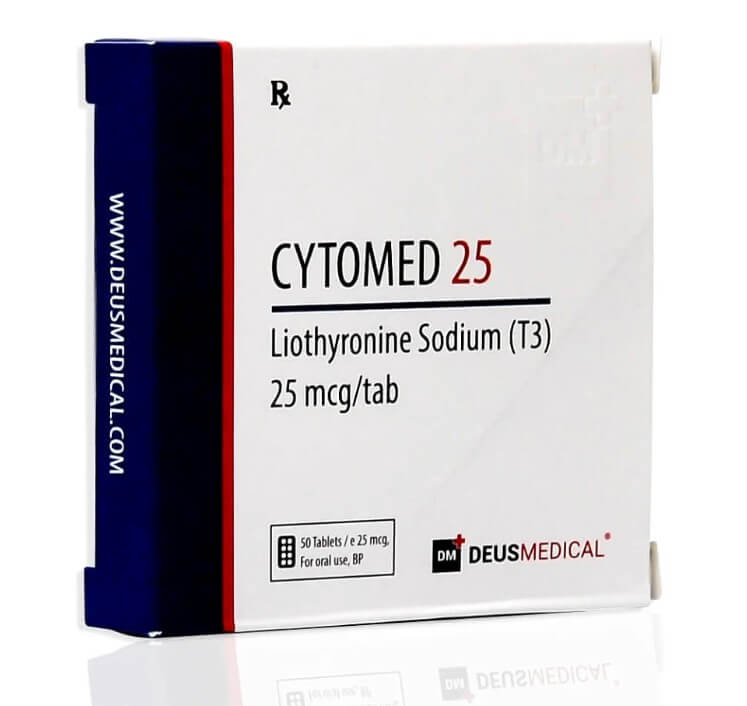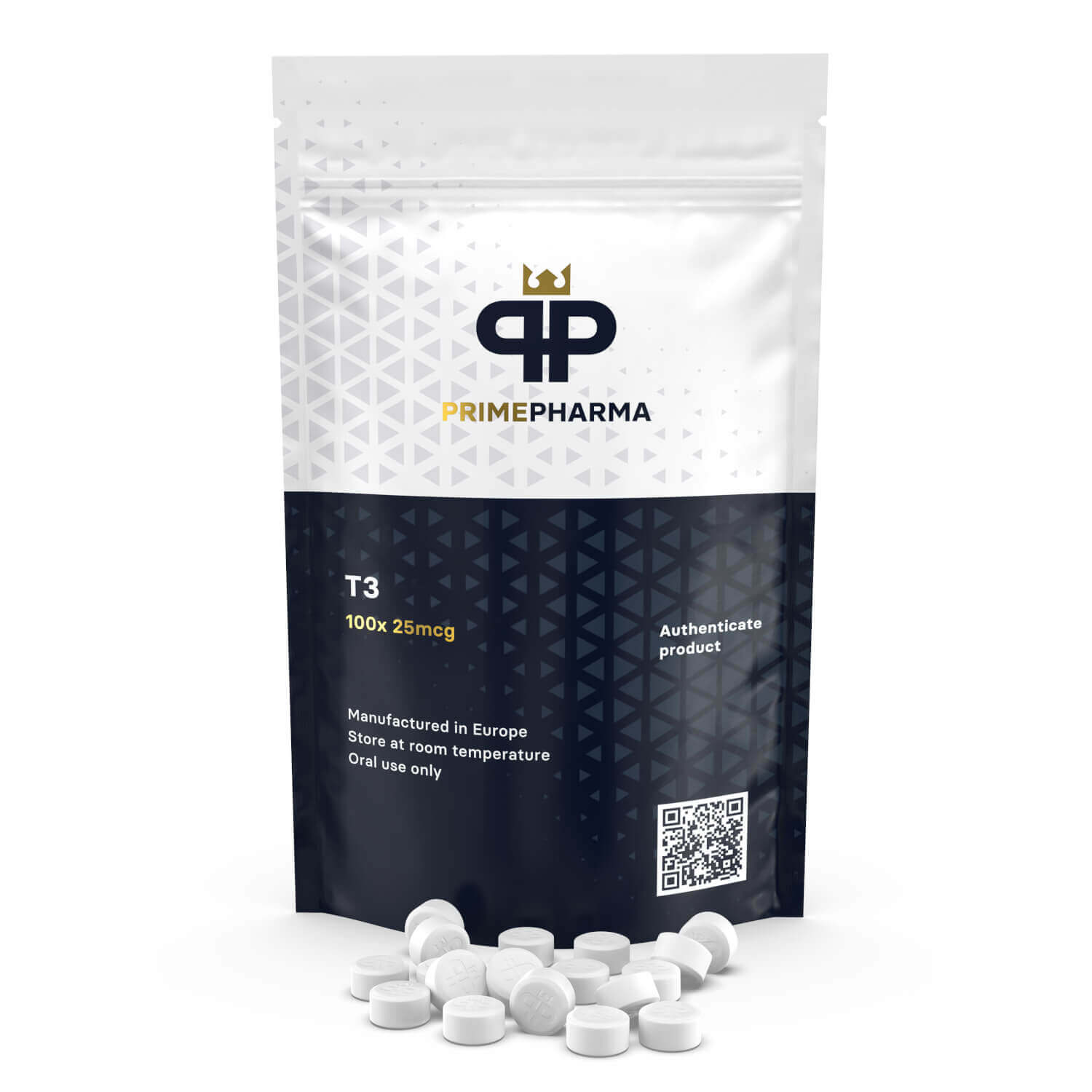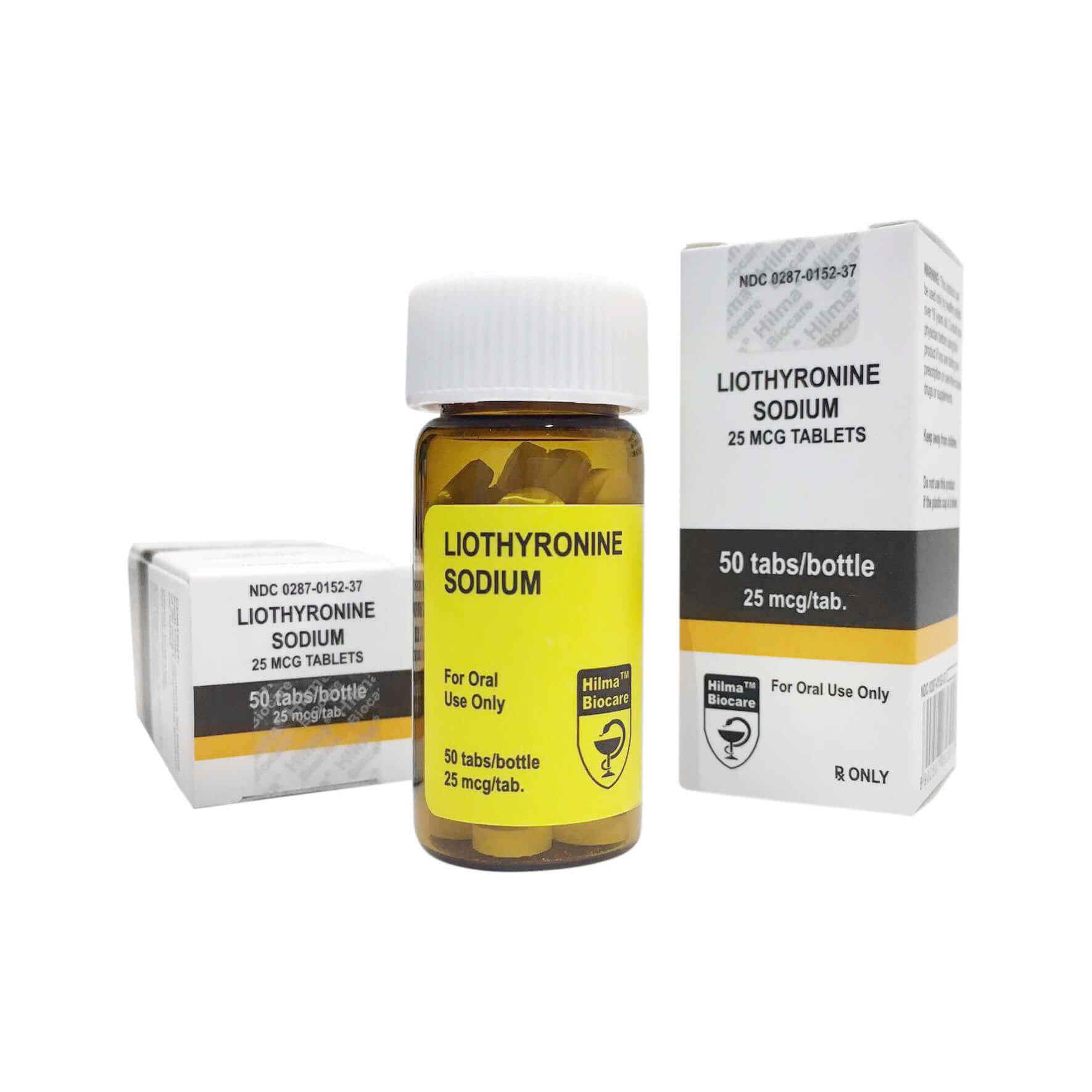T3 Cytomel is a formidable fat-burner.
High quality dry muscle mass gain with T3-Cytomel.
T3 Cytomel improves protein synthesis.
WELCOME TO CYTOMEL-T3.com
Thanks for dropping by. This website aims to explain the benefits, function and respective structure of the popular Thyroid stimulating agents T3 and T4. These medications have been used for decades as a means of stimulating the thyroid gland into a positive state of production when it is suffering from a state of “underperformance.”

Exogenous Thyroid Hormones (T3 & T4)
This profile has been created for the purpose of explaining the benefits, function and respective structures of the popular Thyroid stimulating agents T3 and T4.
These medications have been used for decades as a means of stimulating the thyroid gland into a positive state of production when it is suffering from a state of “underperformance.”
This lack of functionality is manifested in the condition known as “hypothyroidism” – those who suffer from this condition do not produce enough of the thyroid hormone in general.
Those who incorporate a T3 cytomel (or T4) cycle during such an instance will find that their production of said hormone rapidly and potently evolves, thus leading to a state of equilibrium being restored.
This is the “official” purpose of these products at least; an auxiliary function lies in its implementation into an aesthetically charged anabolic cycle, specifically a cutting phase whereas the thyroid gland can be sent into a state of “overdrive” by using one of these supplements, thus yielding a metabolic boost.
What Is The Thyroid Gland?
The Thyroid gland lies in the base of the neck and is responsible for releasing the hormones that are ultimately responsible for controlling, sustaining and optimising our metabolic functionality.
This process initially begins as a result of the pituitary gland releasing a signal to the hypothalamus, which then in turn triggers the release of thyroxine from the thyroid gland. How it actually assimilates thyroxine (and ultimately its “successor” too) is by drawing iodine from our food, which is then used to produce the hormones Thyroxine and Triiodothyronine.
Respectively, these hormones are known as T3 and T4 – hence the name of the exogenous products you may already be accustomed to. These products are literally synthesised variants of these hormones. Thyroxine actually travels through the bloodstream and into the various organs of the body where it then converts into triiodothyronine in the body’s vital organs (primarily the liver and kidneys.) As such, thyroxine is a precursor to the latter hormone and is necessary for its production.
 The thyroid gland releases 20% of the available triiodothyronine in the body of its own accord, but the other 80% comes from the thyroxine conversion process. Triiodothyronine should simply be viewed as the “useful” form of thyroxine. Thyroxine itself is inaccessible for any practical purpose in its own right and must convert into “thyronine” in order to serve the metabolic functions of the body appropriately. When converted, thyronine travels into the bloodstream itself and then “agitates” the metabolism into a state of positive activity. The more “excited” the metabolism gets, the harder and faster it works.
The thyroid gland releases 20% of the available triiodothyronine in the body of its own accord, but the other 80% comes from the thyroxine conversion process. Triiodothyronine should simply be viewed as the “useful” form of thyroxine. Thyroxine itself is inaccessible for any practical purpose in its own right and must convert into “thyronine” in order to serve the metabolic functions of the body appropriately. When converted, thyronine travels into the bloodstream itself and then “agitates” the metabolism into a state of positive activity. The more “excited” the metabolism gets, the harder and faster it works.
It’s ultimately the speed in which our metabolism works that dictates how many calories we utilise throughout the day, and the efficiency in which our nutrients are “uploaded” into our system. It controls every positive function within our body, and is vital for ensuring that we “work” properly. You should view it in a similar fashion to a computer’s operating system – when the software is “up to date” (as a result of appropriate functionality from the food you eat in this instance), we operate in an optimal capacity. When the software is “out of date” (or a lack of adequate nutrition / functionality in this instance), the system runs ineffectively or slowly, thus leading to an unusable platform in a worst-case scenario.
This is similar to what takes place when thyroid functionality (and therefore metabolism) is not at an optimal level. Our body fails to “run” any of its internal processes effectively. It’s probably obvious that a lack of optimisation in regards to internal function is going to be bad for your overall vitality, but it’s actually the act of functionality itself, or rather the “activity” involved in said functionality, that we are concerned with here.
The T3 Hormone (Triiodothyronine)
This thyroid hormone gets it name due to the fact that it has three Iodine molecules attached to it (some believe that it is due to this being the “third” thyroid hormone but this isn’t the case – its number value is purely due to the reason stated.)
Of the two hormones (T3 and T4), triiodothyronine is regarded as being the strongest owing to the fact that it is the “usable” hormone. Whereas thyroxine can actively impact the amount of triiodothyronine released, it cannot actually take any form of action in regards to metabolic output itself. Triiodothyronine however can, and it’s entirely down to the activity of this hormone within the cells and organs of our body that we actually have a functioning metabolism.
In a way, you could view T3 as being the “fuel” that fires the metabolism, whereas thyroxine (T4) is merely the “pump” that delivers said fuel effectively into the system. With this in mind, you may wonder why one would choose to use T4 instead of T3 considering the latter is more potent. As with anything on the aesthetic “scene” – it’s all purely down to your level of experience and what you actually need.
Considering T3 is essentially comparable to metabolic rocket fuel, it’s probably going to come as no surprise that it’s very powerful. Whilst you are definitely going to experience results whilst using it in regards to fat loss, they’re going to come at the cost of likely side effects arising.
As such, T4 should be considered as a milder but still effective option. It’s a little like the difference between testosterone and prohormones – one leads to anabolic activity through the gentle persuasion of bodily processes, whereas the other directly places it self slap bang into the middle of them and forces them to keep up with it. Neither choice is wrong, but if you’re inexperienced when it comes to taking products like this in general then it goes without saying that you shouldn’t start at the top of the ladder.
You need to climb your way up first via carefully planned and “mild” product cycles of the type that T4 provides. Please bear in mind when looking for this product online that it typically goes under the names thyronine, liothyronine, cytomel or T3. It may be encountered under its full name “triiodothyronine” too – but the former four label names are far more likely. Outside of an aesthetic framework – those who ask themselves the question “what is T3 Cytomel used for?” in regards to an “official” medical capacity will find that in conjunction with treating hypothyroidism, this medication is also integrated as a treatment for goiters and as a means of testing for certain thyroid related conditions.
This is one of the very few (as with T4) pharmaceutical grade compounds being used on the aesthetic scene that is actually predominantly still being used for its intended purpose – you’ll often find that the use of many products within this field (most anabolic steroids for example) are used roughly equally as much for bodybuilding / aesthetic goals as they are for the treatment of patients.
This is in part due to exogenous thyroid manipulation of this variety being a rather extreme means of attaining fat loss when compared to other, “simple” methods.
The T3 Hormone (Triiodothyronine)
This thyroid hormone gets it name due to the fact that it has three Iodine molecules attached to it (some believe that it is due to this being the “third” thyroid hormone but this isn’t the case – its number value is purely due to the reason stated.)
Of the two hormones (T3 and T4) triiodothyronine is regarded as being the strongest owing to the fact that it is the “usable” hormone. Whereas thyroxine can actively impact the amount of triiodothyronine released, it cannot actually take any form of action in regards to metabolic output it self. Triiodothyronine however can, and it’s entirely down to the activity of this hormone within the cells and organs of our body that we actually have a functioning metabolism.
In a way, you could view T3 as being the “fuel” that fires the metabolism, whereas thyroxine (T4) is merely the “pump” that delivers said fuel effectively into the system. With this in mind, you may wonder why one would choose to use T4 instead of T3 considering the latter is more potent. As with anything on the aesthetic “scene” – it’s all purely down to your level of experience and what you actually need.
Considering T3 is essentially comparable to metabolic rocket fuel, it’s probably going to come as no surprise that it’s very powerful. Whilst you are definitely going to experience results whilst using it in regards to fat loss, they’re going to come at the cost of likely side effects arising.
As such, T4 should be considered as a milder but still effective option. It’s a little like the difference between testosterone and prohormones – one leads to anabolic activity through the gentle persuasion of bodily processes, whereas the other directly places itself slap bang into the middle of them and forces them to keep up with it. Neither choice is wrong, but if you’re inexperienced when it comes to taking products like this in general, then it goes without saying that you shouldn’t start at the top of the ladder.
You need to climb your way up first via carefully planned and “mild” product cycles of the type that T4 provides. Please bear in mind when looking for this product online that it typically goes under the names thyronine, liothyronine, cytomel or T3. It may be encountered under its full name “triiodothyronine” too – but the former four label names are far more likely. Outside of an aesthetic framework, those who ask themselves the question “what is T3 Cytomel used for?” in regards to an “official” medical capacity will find that, in conjunction with treating hypothyroidism, this medication is also integrated as a treatment for goiters and as a means of testing for certain thyroid related conditions.
This is one of the very few (as with T4) pharmaceutical grade compounds being used on the aesthetic scene that is actually predominantly still being used for its intended purpose – you’ll often find that the use of many products within this field (most anabolic steroids for example) are used roughly equally as much for bodybuilding / aesthetic goals as they are for the treatment of patients.
This is in part due to exogenous thyroid manipulation of this variety being a rather extreme means of attaining fat loss when compared to other, “simple” methods.
The T4 Hormone (Thyroxine)
As you may have guessed, T4 gets its name as a result of having 4 iodine molecules attached to it.
As the precursor to T3, this hormone isn’t what we could call “functionally” active within the body – that is to say, it’s a hormone predecessor as opposed to being a means of directly intervening in the metabolism itself.
The conversion process to transform T4 into T3 takes place as a result of an enzyme known as the 5-deiodinase enzyme. This in turn is produced as a result of optimum hormonal output in other areas (including the optimal production of growth hormone) and a relevant intake of Iodine.
As stated previously, T4 isn’t as actively powerful as T3 even though it is still a necessary part of the metabolic and thyroid performance process in general.
What one needs to consider before implementing either of these products is whether or not they are in need of a hard “push” in regards to elevated thyroid functionality, or simply a mild “nudge”
in the right direction.
In many ways, T4 isn’t a synthetic means of introducing excess amounts of functional thyroid hormone into the body – it is simply a means of maximising the tools that the body already has at its disposal.
You could draw a similar comparison between SERM (Selective Estrogen Receptor Modulator) products and AI (Aromatase Inhibitor) products. One is a means of gently modulating the release of estrogen, whereas the other is a means of crushing down hard on its production in an unnatural fashion.
Similarly, T4 helps to optimise the natural bodily processes you’re already performing on a daily basis, whereas T3 is a potent means of forcing excess metabolic activity.
It’s simply the difference between a more “natural” approach, and an “artificial” approach.
It probably goes without saying that in an ideal world, it would likely prove safer and easier on the whole for an individual to first attempt T4 integration before they even consider using T3.
Of course, it depends on your needs too – whilst you should never attempt to use the latter hormone if you haven’t first used T4, you might need to drop a fairly dramatic amount of weight within a fairly minimal timeframe.
If this is the case, you’d need the “unapologetic” approach on offer by T3 (experience-dependant). It is always possible however to either reach your goals by using T4 or by using neither at all. It’s all down to your nutritional discipline and “peak” (the time where your body needs to be in the best condition possible) timing.
Please note that this product is likely going to be encountered with the “label” names T4, thyronine and liothyronine. You might occasionally encounter it being labelled as triiodothyronine, but this is unlikely outside of pharmaceutically designed product lines.
The T4 Hormone (Thyroxine)
As you may have guessed, T4 gets its name as a result of having 4 Iodine molecules attached to it.
As the precursor to T3, this hormone isn’t what we could call “functionally” active within the body – that is to say, it’s a hormone predecessor as opposed to being a means of directly intervening in the metabolism it self.
The conversion process to transform T4 into T3 takes place as a result of an enzyme known as the 5 – deiodinase enzyme. This in turn is produced as a result of optimum hormonal output in other areas (including the optimal production of growth hormone) and a relevant intake of Iodine.
As stated previously, T4 isn’t as actively powerful as T3 even though it is still a necessary part of the metabolic and thyroid performance process in general.
What one needs to consider before implementing either of these products is whether or not they are in need of a hard “push” in regards to elevated thyroid functionality, or simply a mild “nudge” in the right direction.
In many ways, T4 isn’t a synthetic means of introducing excess amounts of functional thyroid hormone into the body – it is simply a means of maximising the tools that the body already has at its disposal.
You could draw a similar comparison between SERM (Selective Estrogen Receptor Modulator) products and AI (Aromatase Inhibitor) products. One is a means of gently modulating the release of estrogen, whereas the other is a means of crushing down hard on its production in an unnatural fashion.
Similarly, T4 helps to optimise the natural bodily processes you’re already performing on a daily basis, whereas T3 is a potent means of forcing excess metabolic activity.
It’s simply the difference between a more “natural” approach, and an “artificial” approach.
It probably goes without saying that in an ideal world, it would likely prove safer and easier on the whole for an individual to first attempt T4 integration before they even consider using T3.
Of course, it depends on your needs too – whilst you should never attempt to use the latter hormone if you haven’t first used T4, you might need to drop a fairly dramatic amount of weight within a fairly minimal timeframe.
If this is the case, you’d need the “unapologetic” approach on offer by T3 (experience dependant.) It is always possible however; to either reach your goals by using T4 or by using neither at all. It’s all down to your nutritional discipline and “peak” (the time where your body needs to be in the best condition possible) timing.
Please note that this product is likely going to be encountered with the “label” names T4, thyronine and liothyronine. You might occasionally encounter it being labelled as triiodothyronine, but this is unlikely outside of pharmaceutically designed product lines.
Free Personalized Advice For Your Cytomel Cycles





